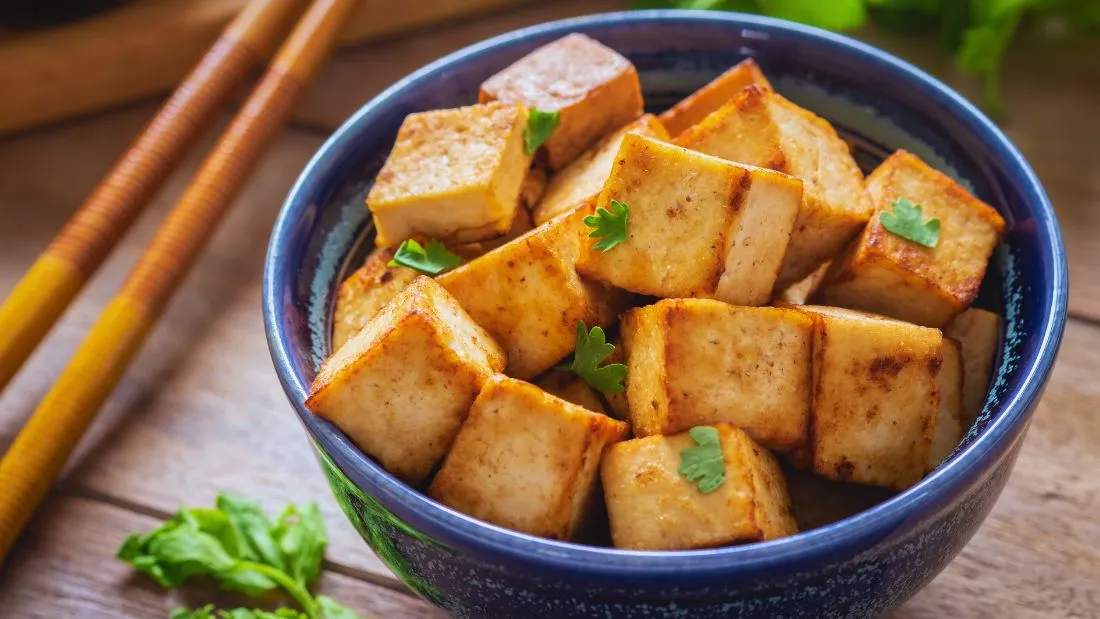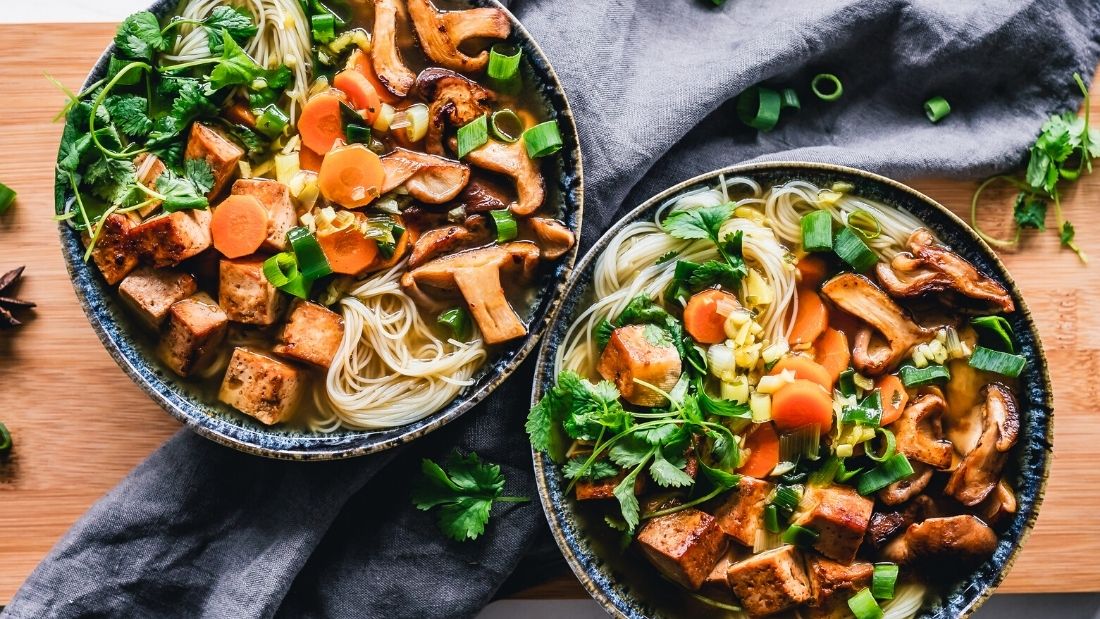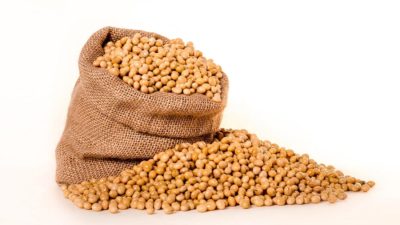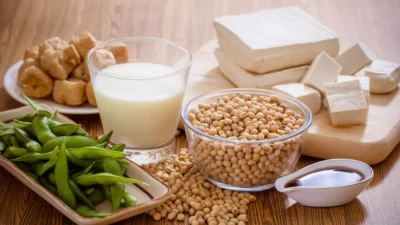Tofu

Tofu is also known as bean curd and has been around for millennia. With its nutritional benefits and low carbon footprint, it’s also the food of the future.
How is tofu made?
The process starts with dried soya beans that are soaked in water and then ground with fresh water to a pulp which is then cooked and strained to obtain soya milk. The remaining solids are called okara and may be used as an ingredient in other foods.
To make the tofu we know, calcium or magnesium salts are added to the milk to make it curdle and the resulting solids are poured into moulds which allow the carbohydrate-rich liquid to drain while the protein-rich curd remains. The resulting tofu is then cut into blocks and cooled. If calcium salts are used, it will be high in calcium – if magnesium salts are used, calcium content is lower.
Nutrients in tofu
Tofu is a true nutritional powerhouse with some small differences in the nutrient content depending upon the manufacturer.
One hundred grams of tofu provide around 12-15 grams of protein, about four grams of carbohydrates – of which about a third is fibre – and just over five grams of fat. That makes tofu an excellent low-fat and low-carb source of protein. What’s more, soya protein contains all nine essential amino acids (protein building blocks) which the human body needs.
The fat in tofu contains essential omega-3 and omega-6 fats and very little saturated fat, making it an superb choice for heart health.
A 100-gram serving of tofu supplies only small amounts of B vitamins and vitamin K but it delivers an impressive dose of minerals:
- over two milligrams of iron (recommended daily intake is 8.7-14.8 milligrams) – iron is a vital part of the oxygen-carrying molecules haemoglobin (in red blood cells) and myoglobin (in muscles) and it also makes up part of many proteins in the body
- over one milligram of zinc (recommended daily intake is 7-9.5 milligrams) – needed for cell reproduction, manufacture of many enzymes, processing nutrients from food, wound healing, healthy vision, immune system support and male reproductive health
- over 49 milligrams of magnesium (recommended daily intake is 270-300 milligrams) – essential for nerve and muscle function, healthy immune system, steady heartbeat and strong bone structure
- over 13 micrograms of selenium (recommended daily intake is 60-75 micrograms) – needed for our cell defence mechanism and acts as an antioxidant, protecting cell membranes and DNA from damage. It is also needed for the correct functioning of the thyroid gland and plays a role in fertility
- over 260 milligrams of calcium per 100 grams (recommended daily intake is 700 milligrams) in tofu made with calcium salts – calcium is vital for healthy bones, muscle function, nerve transmission, signalling within cells and hormone formation
Antioxidant phytoestrogens
Phytoestrogens are natural substances found in many fruits, vegetables, beans, peas and wholegrains. Their chemical structure is similar, but not identical, to human oestrogen and their effect is extremely weak compared to the human hormone. Isoflavones are a type of phytoestrogen found in soya and, depending on the type, are estimated to be between 100 and 100,000 times weaker than actual oestrogens.
Concerns have been expressed in the past that phytoestrogens might affect sexual development and fertility but those fears were based on the results of animal experiments. Human studies, on the other hand, show that soya phytoestrogens are not only safe to consume but also health-protective.
They act as antioxidants and are anti-inflammatory – research reveals that they help to lower your risk of heart disease, hormone-sensitive cancers and even dementia. There are other antioxidants in tofu as well but isoflavones are the most potent.
How to use tofu
Now you know just how great tofu is nutritionally, you may want to eat is more often and there are endless possibilities. Due to its neutral taste, you can use it in both sweet and savoury dishes and it also freezes well.
Savoury tofu dishes require a fair amount of seasoning but tofu absorbs flavours very well so a little bit of marinade or even just soya sauce and garlic can do wonders. Try tofu in stir fries, sushi, sandwiches, scrambled, crumbled in potato cakes, grated in potato rosti, baked or simply fried and crispy.
You can also blend tofu into sweet dishes and drinks, including smoothies, chocolate mousse or use it as a base for sweet cake fillings.
See tofu recipes at our Vegan Recipe Club and get inspired!
Different types of tofu
Tofu can have different types of consistency, depending on its water content. The more water, the softer the tofu – the less water, the firmer the tofu.
Silken tofu has the highest water content and doesn’t hold its shape, so it’s ideal for dips, creamy desserts and soft scrambled tofu. Regular and firm tofu are somewhere in the middle – they hold their shape well and easily absorb flavours. Extra and super firm tofu are very dense and you can use them cubed in sauces instead of meat or paneer.
Can you eat tofu daily?
You certainly can but remember to keep your diet varied. If you do have tofu every day, have something else for the other two main meals. Variety ensures a healthy diet so also include other pulses, nuts, seeds, wholegrains, fruits and veggies in your menu.








